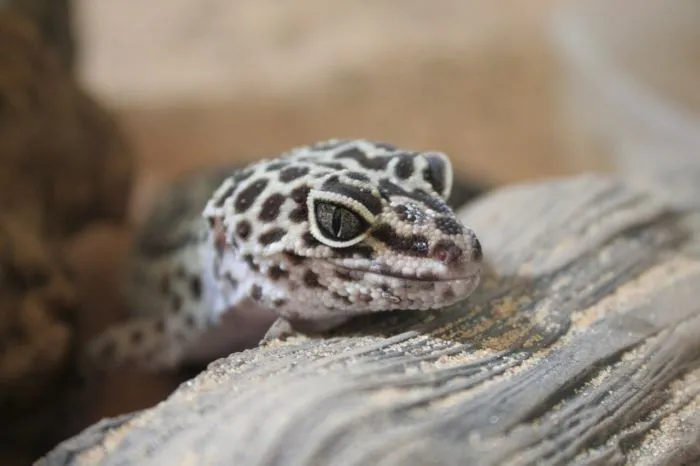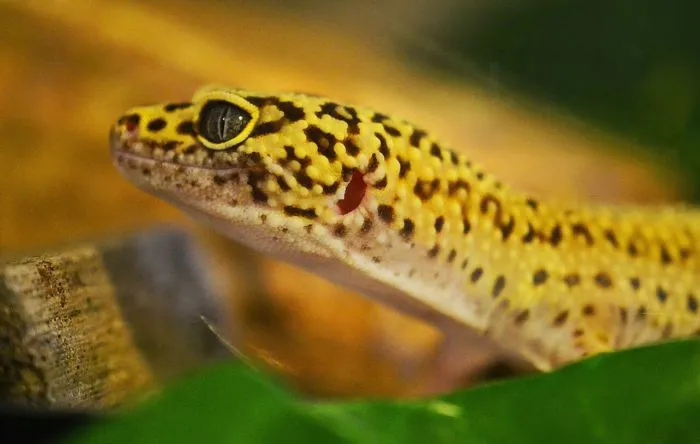 Part of the fun of having a leo is that you get to watch them go about their daily business in their habitat. For us reptile fans, this is funny, informative, endearing, and just cool to watch. It also makes you ask questions about the behavior you are witnessing.
Part of the fun of having a leo is that you get to watch them go about their daily business in their habitat. For us reptile fans, this is funny, informative, endearing, and just cool to watch. It also makes you ask questions about the behavior you are witnessing.
Why your leopard gecko is digging? Digging is a normal activity that leopard geckos do as a means of getting away from the sun to cool down, searching for
To understand in full why your leopard gecko does this, and ways you can make their environment great for them, keep on reading.
Table of Contents
Leopard Gecko Digging: A Bit More Detail
Your leo may dig for any number of reasons, one of which is to escape the heat of the
Providing a moist hide, a cool hide, and a warm hide are all important for your gecko’s well-being.
Digging into the substrate you have provided is an excellent way to cool off. Leos love temps that range anywhere from 87 to 90 degrees F in the hot zone of your
Keep thermometers in your
Stress may also be a reason that your leopard gecko digs in the substrate. Irritation from the sand, for instance, can be a pain point for leopard geckos.
Sand ingestion leads to the impaction of the digestive system, which in turn makes your leo feel very uncomfortable. Paper towels make an excellent alternative substrate, as they are safe, cheap, and readily available at any store.
So How Can I Provide Optimum Temperature?
Firstly, make sure that you have the right equipment. Having up to date light bulbs and thermometers that work is critical in making sure your leo stays at the temperature that works best for him.
If at all possible, try to use a heating pad if you can. These little guys aren’t fans of bright light, as they tend to come out at night.
Therefore, so long as you have a room that is not too bright but still able to tell when it’s day or night time out, a heating pad is a good idea.
For instance, one family we know has their gecko habitat in the corner of the family room. It’s a warm room with windows, but not so bright the reptile hides all day. A heat pad keeps him warm.
A right reptile light bulb is okay if you need it. A low watt, the incandescent light bulb is an excellent way to give your gecko the heat he desires. White is right for replicating daytime conditions.
A good night bulb is essential also. Look for a ceramic heat bulb. It will produce only heat, no light-so your gecko can enjoy the night with no worries about a bright light.
Even if you use a heat pad, this bulb can provide some supplemental heat-great for those of you that live in cold areas but still wish to keep leos.
Do keep in mind that ceramic bulbs can get pretty hot and make your leo get frustrated with how hot it gets. Small habitats will become overly hot with a ceramic bulb in some cases.
Infrared ceramic bulbs work best in habitats that are 20 gallons or larger and require supplemental heat.
Providing the Right Hides
Another reason you might see your leos digging in the substrate is because they need to hide.
Leopard geckos use hides as a means of getting out of the heat and the bright light. If it gets too warm in the terrarium, the leopard gecko will look for a way to stay cool. Hides are also a place for him to hide when things get stressful or to get some sleep.
An excellent hide will have enough space for your gecko to enter comfortably and get out of quickly. They should be able to lie down as well. A good habitat will have three hides for the gecko: a hot hide, a cool hide, and a moist hide.
Put the warm hide near the lights, preferably in a basking spot. This way, your leo has a spot to digest or get warm. Put a cool spot together where your gecko can go to rest and cool off if it gets warm. You can put this in the cool zone of the
Some good ideas include a hide box that looks natural. You can buy them in shapes of rocks, or you can construct one of your own. Some good ones include terra cotta pots, sanitized pieces of bark, and other similar objects.
Moist Hides: What to Do
A moist hide, sometimes called a shedding hide, is another useful thing your gecko needs that will prevent him from digging out of frustration or stress.
This hideout will be filled with a substrate that holds moisture as a means of increasing humidity. It makes an excellent place for your gecko to hide out, cool off, and shed his skin faster.
You can spray in some water to get the humidity up. Leos don’t need lots of it as they are desert creatures in nature. Therefore, it is a good idea to increase humidity in just one spot by adding water to a shedding box.
A right shed box is a rock cave, or you can even use a fun reptile-approved ornament. A replica dinosaur skull made for reptile habitats is one fun example.
These hideouts should be kept in the center of the
Some Leopard geckos even eat their shed skin afterward. We show you why they do that in this article!
Having A Safe Place to Lay Eggs
Another reason you might find your leo digging is because SHE is getting ready to lay eggs.
Your female will be looking around for a moist hide in which to lay her eggs. It will keep herself and her eggs safe, and her body temp in a good spot. If you do not have a moist hide, she will dig around wherever she thinks is an excellent place to lay eggs.
It is a simple fix-all you have to do is provide a good substrate that is moist so she can feel comfortable about laying the eggs. After all, failure to provide the correct substrate could result in the eggs becoming bound inside of the female.
Some good substrate ideas include this coconut soil bedding or this sphagnum moss. These are both natural substrates that your leo will feel confident about laying eggs in.
Even if you do not breed your leo, it is important to understand that female leopard geckos can lay eggs even when there is not a male gecko around.
Even though the eggs will not be fertile, you should still provide a place to comfortably lay the eggs so that she doesn’t undergo any undue stress.
Escaping Predators
Another reason you might find your gecko digging around in the dirt is because of their need to hide from predators. You certainly will not have any predators in the
For example, young children who come around and reach their hands into the
Pets, such as cats, may also make your gecko feel nervous. Cats may bat at the
Of course, your goal is to keep your gecko stress-free. Provide those hides, and make sure others do not attempt to handle or play with your leopard gecko unless you can watch them. It will keep everybody involved safe and free of undue stress.
By the way, Leopard geckos can also get stressed by other leopard geckos. In fact, housing two leopard geckos together can be one of the most stressful things for the animals. We explain why here!
Check Your Tank
The first thing to do if you see your gecko digging is to make sure everything is in order. Make sure the temps are good, ensure you have the hides needed, and make sure your gecko is free of stress.
Make sure they are eating enough, drinking enough, and offer some playtime each day. If all these are corrected and you still find they keep on digging, schedule a vet visit right away. Watch your gecko each day so you can notice immediately any changes in behavior.
Conclusion
A stress-free environment that is comfortable and well-stocked with
- Enchi Ball Python: A Unique and Stunning Morph of Python regius - March 27, 2025
- Emerald Tree Monitor: The Enigmatic Green Guardian of the Rainforest - March 26, 2025
- The Egyptian Cobra (Naja haje): A Fascinating Serpent - March 25, 2025

Hannah
Wednesday 14th of July 2021
Your tips help me out because I adopt a male Leo gecko from my older sister she was go to give to a pet shop but I was like heck I will keep him with my female up stairs but she in a separate cage so baby’s lol but is normal for them to wage there tails really slow low tail S shape.
Pierre And The ReptileCraze Team
Thursday 22nd of July 2021
Hey Hannah,
very nice of you that you keep your sister's leo!
Well, that tail wagging can have several meanings. I recommend reading our article on why leopard geckos wag their tails here.
However, I see a little problem with keeping one male leo and one female leo. Male leos tend to harrass female leopard geckos all the time because they want to mate. This can be too much for just one female. It is recommended to get at least three females for one male so that the "stress" is spread on three female leopard geckos.
Hope this helps,
Pierre